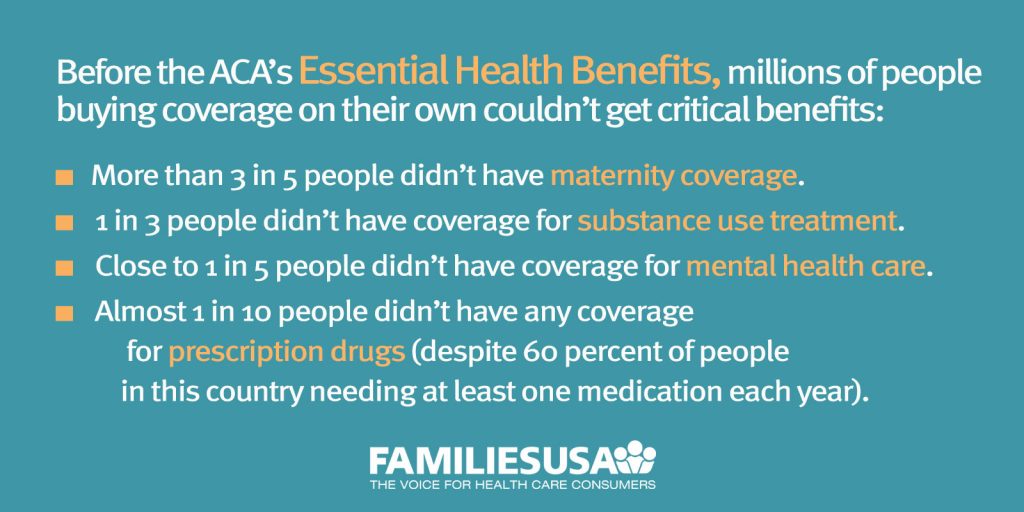An Unbiased View of Health Insurance In Toccoa, Ga
Table of ContentsNot known Details About Final Expense In Toccoa, Ga Facts About Final Expense In Toccoa, Ga RevealedA Biased View of Final Expense In Toccoa, GaThings about Annuities In Toccoa, Ga

1 and 3. 2 (Insurance in Toccoa, GA), for further information. New immigrants represent a substantial percentage of individuals without health insurance policy. One evaluation has actually attributed a substantial part of the current growth in the dimension of the united state without insurance populace to immigrants that got here in the nation in between 1994 and 1998 (Camarota and Edwards, 2000)
Wellness insurance policy insurance coverage is a crucial element in a lot of versions that portray access to healthcare. The connection in between wellness insurance coverage and access to care is well established, as documented later in this phase. Although the connection between health and wellness insurance policy and wellness outcomes is neither direct nor simple, a comprehensive medical and wellness services study literature web links medical insurance protection to enhanced access to care, better top quality, and enhanced individual and populace health and wellness condition.
Home Owners Insurance In Toccoa, Ga for Dummies
The issues faced by the underinsured remain in some respects comparable to those faced by the without insurance, although they are normally much less serious. Uninsurance and underinsurance, however, include definitely different policy problems, and the strategies for resolving them may differ. Throughout this study and the 5 records to comply with, the major focus gets on individuals without any health insurance policy and therefore no support in spending for healthcare past what is available with charity and safety web establishments.

Wellness insurance is an effective element influencing invoice of treatment because both individuals and doctors reply to the out-of-pocket cost of solutions. Health and wellness insurance, nevertheless, is neither necessary neither enough to gain accessibility to medical services. The independent and straight result of wellness insurance coverage on accessibility to health services is well developed.
Others will certainly obtain the healthcare they require also without wellness insurance, by paying for it out of pocket or seeking it from carriers that offer care totally free or at extremely subsidized rates - Health Insurance in Toccoa, GA. For still others, medical insurance alone does not make certain invoice of treatment since of various other nonfinancial obstacles, such as an absence of health and wellness treatment suppliers in their neighborhood, restricted access to transportation, illiteracy, or etymological and cultural differences
The Best Guide To Commercial Insurance In Toccoa, Ga
Official research study about uninsured populations in the United States dates to the late 1920s and early 1930s when the Board on the Cost of Treatment created a collection of reports about funding doctor workplace gos to and hospitalizations. This problem ended up being salient as the numbers of medically indigent climbed up during the Great Anxiety.
Empirical researches continually sustain the web link in between access to care and improved wellness results (Bindman et al., 1995; Starfield, 1995). Having a regular resource of treatment can be thought about a forecaster of gain access to, instead than a straight procedure of it, when health end results are themselves made use of as accessibility indications.
The Greatest Guide To Life Insurance In Toccoa, Ga

Emergency situation divisions are portrayed as a pricey and unsuitable website of main care solutions, lots of uninsured people look for treatment in emergency departments because they are sent out there by other health and wellness care carriers or have nowhere else to go. Emergency situation care professionals suggest that the country's emergency divisions not just continue reading this act as providers of last option but are a critical entrance factor into the healthcare system (O'Brien et al (https://www.find-us-here.com/businesses/Thomas-Insurance-Advisors-Toccoa-Georgia-USA/33986956/)., 1999)
Chapter 2 offers an introduction of exactly how employment-based medical insurance, public programs and individual insurance policies run and interact to provide extensive but incomplete insurance coverage of the united state population. This includes a testimonial of historic patterns and public policies influencing both public and personal insurance, a discussion of the interactions amongst the various kinds of insurance, and an examination of why individuals move from one program to another or wind up without coverage.Chapter 3 synthesizes existing information to get here at a composite summary of the uninsured: What characteristics do individuals without protection usually share? Where do the uninsured real-time? The chapter additionally offers info concerning the danger of being or becoming without insurance: Exactly how does the opportunity of being uninsured adjustment depending upon selected features, such as racial and ethnic identity, country or urban residency, and age? What are the likelihoods for particular populaces, such as racial and ethnic minorities, rural citizens, and older working-age persons, of being without insurance? How does the possibility of being without insurance change over a life time? In addition to defining the chance of being uninsured in regards to a solitary dimension, such as gender, age, race, job status, or geographic area, Chapter 3 likewise offers the results of multivariate analyses that use a more helpful representation of the variables that contribute to the possibilities of being without insurance.